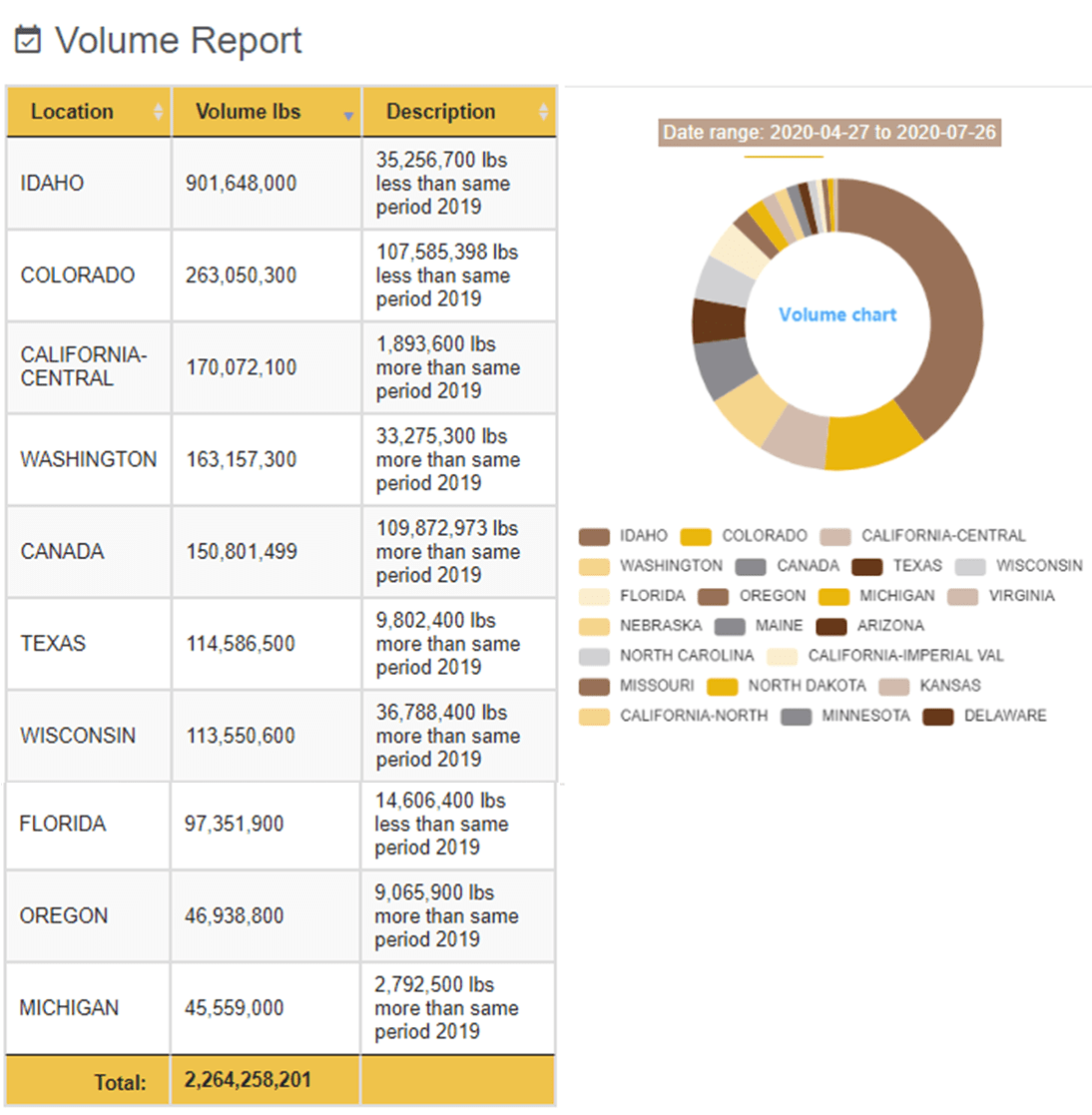Potato prices are rising as last year’s crop finishes from storage and the new crop gets higher volume into the pipeline.
The summer is a contrast to 10 weeks ago when the potato market was reeling from the effects of the pandemic, which saw foodservice demand drop and prices cut in half from March to May.
Compared to the last two years, the volume for this period is very similar, said Raul Lopez, agronomist and vice president of Agtools Inc. BB #:355102
Blue Book has teamed with Agtools Inc., the data analytic service for the produce industry, to look at a handful of crops and how they’re adjusting in the market during the pandemic.
With ups and downs, the total volume continues in the annual range of 2.2 billion pounds. There is a slight decrease in volume this year in the second half of July. It seems that this market has recovered after the lockdown.
F.O.B. PRICE FOR IDAHO CONVENTIONAL POTATOES 50 LB CASE SIZE 70S
The F.O.B. price in the last 90 days has been increasing, Lopez said. In early May the price was lower than the 2 previous years. The lowest price was below $10. In the second half of May, it increased to $14 and remained steady until the first week of July that started an upward trend, reaching $20. It seems that this trend has not stopped yet, he said.
NEW YORK TERMINAL MARKET FOR CONVENTIONAL IDAHO POTATOES SIZE 70S
The New York market has been cheaper this year compared to the previous one. During May, the price dropped from $26 to $20 and for a few days even below that, Lopez said.
In the month of June there were ups and downs, and remained in that range, however in July, the price has started to increase very fast. For the 3rd week of July, the price has reached $28, and it seems that it will continue increasing.
POTATO VOLUME

Potatoes are possibly the produce item that is mostly grown in the U.S. Over the last 90 days, nine U.S. states plus Canada regions have supplied the majority of the U.S. market.
Idaho produces almost 40 percent of the volume in 2020. Colorado produces almost 12 percent and Central California approximately 7.5 percent of the volume. Idaho and Colorado have supplied less volume compared to 2019, and California, Washington and Canada have increased their volume in this period.






